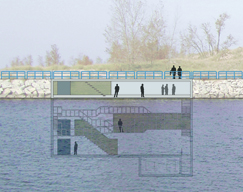
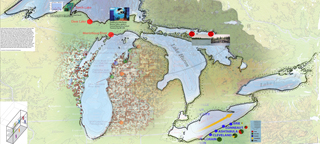
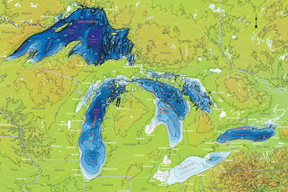
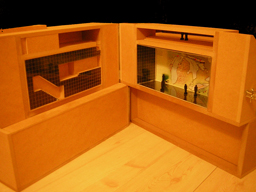
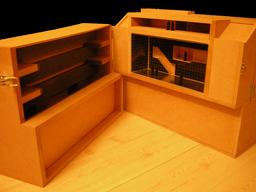
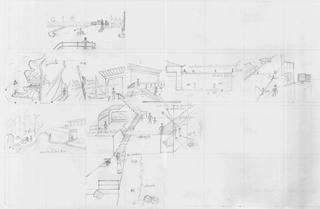



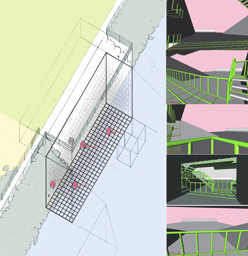
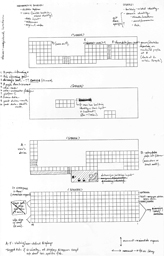
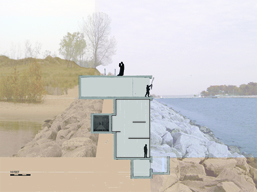
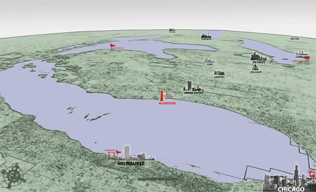
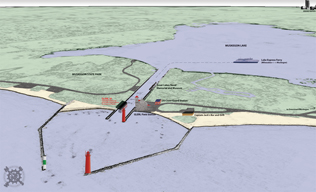

GREAT
LAKES INHABITABLE DATABASE
OF SCIENCE, HISTORY, ECONOMICS, AND CULTURE
REGISTRATION
Non-members
Upon entry, each non-member visitor chooses a dataset to explore on her visit.
Current available datasets include pollution/AOCs, interlake commerce, land
use and mineral deposits, fish spawning and hatcheries, and regional poetry
and prose. Additional possibilities include sets on invasive species, climate
and storms, and any other catagory that building members conceive of and contribute
to. The registered visitor is given a data-strain-specific tracking device
to wear during her visit.
Members
Visitors may become members of the GLERL ID by creating a new dataset
or contributing to any existing one. Data contribution may occur onsite
or
remotely via the
GLERL ID website. Examples of existing member-created datasets include
a link to the online Degree Confluence Project and a set of images
of elementary art
work inspired by the Great Lakes. When members visit the building,
they may
choose to pursue a “generic” dataset or a strain tailored
to their interests as determined by the data they have contributed.NAVIGATION
The lower level of the building houses a 26’ x 58’ display
surface the responds to the movement of visitors via their tracking
devices. The
default display is a map of some segment of the Great Lakes drainage
basin, relatively
devoid of annotation. As visitors move around the building, their dataset
is displayed on the surface at their projected coordinate position,
with varying
levels of detail and annotation dependant upon their distance from
the surface. The surface also provides a barrier between the inhabitable
space of the
building and the water of Muskegon channel and becomes transparent
when
a visitor is
within two feet of it, allowing a view into the actual water of the
Great Lakes. Additional locations or events in and around the building
provide
other experiences
for building visitors, including:
Monitored Fish Project-When a fish included in a GLERL tagging study
is within view of the building, all displays disappear except information
about the particular
fish, allowing visitors to search for and identify an actual fish.
Member’s Override-If a member of the GLERL ID spends more than 2 minutes
on a specified 10’ x 4’ platform, her contributed data
will override all other displays for a period of 2 minutes.
Temporal Comparison-A designated platform displays a dataset over time
(past records or future extrapolation) via animation or small multiples
when multiple
visitors following the same dataset are gathered there.
Member Determined-A platform is designated to display the favorite
dataset of GLERL ID members when more than one member is gathered
there (determined
by online or onsite poll and updated weekly)s















Elizabeth Rothwell